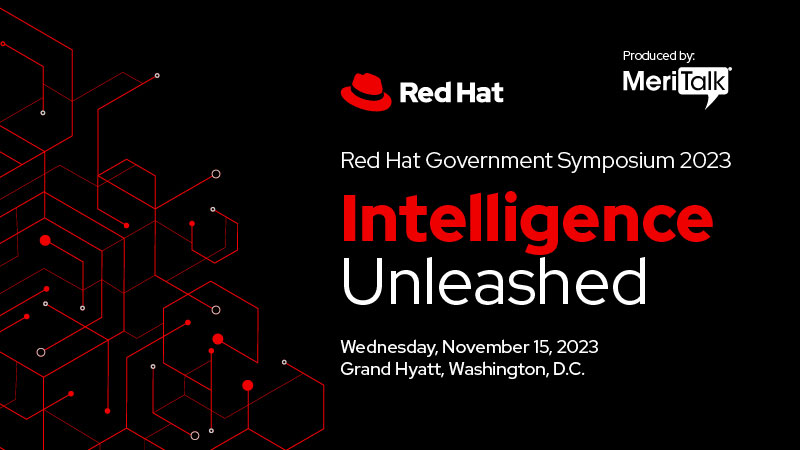As a national security intelligence agency, the National Geospatial-Intelligence Agency (NGA) is well known for delivering geospatial intelligence (GEOINT) analysis that provides a decisive advantage to policymakers, warfighters, and other intelligence professionals in the service of national security.
Artificial intelligence (AI) technologies are an increasingly critical tool in that mission.
With a mission of “Know the World, Show the Way…from Seabed to Space,” NGA is moving fast and responsibly on the adoption of powerful AI capabilities – primarily computer vision capabilities – to better identify objects of national security interest at speed, Mark Munsell, director of NGA’s Data and Digital Innovation Directorate, said during an exclusive interview with MeriTalk.

“Our goal is to identify objects, and we want to do that faster and better. We will continue to increase that capability by investing in new and innovative AI algorithms, ” Munsell said.
He explained that adoption of the technology is especially important due to the higher influx of data the agency continues to see currently – and expects to continue to see in the future.
“As data continues to grow, we have to adjust and shift and make sure that we are able to keep track of everything that’s coming in, and it’s constantly changing and constantly growing,” Munsell said. “So, the algorithms developed are exceedingly useful across the agency.”
Computer vision programs leveraged by NGA in the face of large amounts of data ensure that the agency can keep up and stay on track with its mission to identify objects of national security interest.
“We really have no choice but to use AI capabilities to tackle the exploitation of that data that’s coming in,” Munsell said, going as far as calling the use of AI an “obligation” and “mandatory” to NGA’s mission.
“Without AI, we will not be able to keep up with the data that’s currently coming in,” Munsell said.
That imperative to put AI tech to use also comes amid growing concern from experts in government and the private sector who see a slew of risks associated with AI. Some big tech giants, for example, have even called for a pause in the development and implementation of some aspects of the technology in order to examine its effect on society.
But at NGA, going slow is not an option, Munsell said.
“We understand the sentiment of some leaders who worry this could get out of hand. We appreciate that, but we certainly won’t pause our development of AI at NGA because our goals are to make the country safer,” he said. “So, we need better AI.”
Munsell explained that with GEOINT AI capabilities the agency can identify objects of national security interest “better and faster.” That will help ensure a safer nation because “we’ll be able to do indications and warning better, identify threats faster, and we’ll be able to give that information to our defenders and warfighters faster.”
“We want to go faster in those areas. Because we do believe that we are … at some level of risk of not being fast enough based on our adversaries’ capabilities,” he said.
But while NGA is moving fast on AI, the agency is also committed to doing that responsibly.
“Everything we do is obviously in compliance with the … values established with the Department of Defense’s framework and with the White House’s executive order,” Munsell said. “And we have already established programs aligned with those frameworks.”
NGA’s Vision for Responsible AI
Like many organizations in the Federal government, one of NGA’s objectives for AI is to develop and adopt better AI solutions, but to do so in a responsible manner. Earlier this year NGA released its AI Vision Statement which outlines how the agency will implement a standard for responsible and assured GEOINT AI and a framework for GEOINT AI governance.

“It’s important for us to lead the intelligence community, the services, and all the commands who will be using AI or doing computer vision at some aspect,” Munsell said. “We need to help describe what good computer vision is, what a good algorithm is, what a good test and evaluation plan is, and give some insight on how to be more interoperable and produce GEOINT AI efficiently.”
However, responsible GEOINT AI is a different animal compared to industry standards for responsible AI. One of the reasons why, Munsell explained, is that for the GEOINT and intelligence community the use of AI is focused on identifying image data.
“It’s a different class of responsible use of AI. So, we’re establishing those tenets for the whole community,” Munsell said.
One of the efforts underway to establish these tenets is the establishment of NGA’s GEOINT Responsible AI Training (GREAT) program – which Munsell explained is aligned with the recent AI executive order released by the White House.
The GREAT program is the first of its kind in the GEOINT and intelligence community and it’s a first step so that everyone in the community – users and developers – are trained in the responsible use of GEOINT AI.
Program Maven
One of the most public and popular AI efforts underway at NGA is Program Maven (NGA Maven) – formally named Project Maven
In 2017 the Department of Defense’s (DoD) Office of the Under Secretary of Defense for Intelligence and Security (OUSD I&S) established Project Maven to speed up the integration of big data and machine learning technologies within the department.
But last year, as the agency leading DoD’s GEOINT AI and ML efforts, NGA assumed operational control of Maven’s GEOINT AI services and capabilities from the OUSD I&S. That includes responsibility for labeled data, AI algorithms, test and evaluation capabilities, and the platform.
“GEOINT AI or NGA’s ability to detect objects from imagery or computer vision is getting better and better over time. So, we are bringing in NGA’s full cadre of experts in this area and applying that to Maven to make it better,” Munsell said.
Currently, the most important effort in the transition of NGA Maven is NGA’s shift of the program, contract activities, and software capabilities into the agency’s environment, all the while ensuring any Maven capability never skips a beat for NGA’s DoD customers or Maven users, Munsell explained.
The next step is “programifying” Maven, he said. As a program, NGA Maven will benefit maritime domain awareness, target management and NGA’s ability to automatically search and detect objects of interest.
NGA seeks to turn NGA Maven into an official DoD software program, Munsell said. As of November 7, NGA Maven was formally designated a Program Of Record,
NGA Maven will leverage the Software Acquisition Pathway (DoD 5000.87) – which was established to take software development activities and turn them into programs – to accelerate, deliver, and sustain geospatial artificial intelligence capability maturation.
With NGA Maven, the agency has taken deliberate steps to ensure that the integration of AI into workflows will continue to accelerate operations and speed-to-decision for combatant commanders.
According to an NGA spokesperson, the designation of NGA Maven as a program of record follows a nine-month intensive period of requirements development, documentation, and approvals – equivalent to more than two years of effort.

